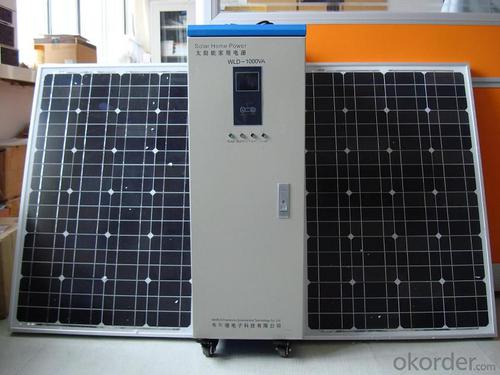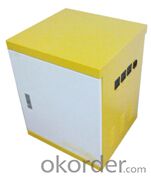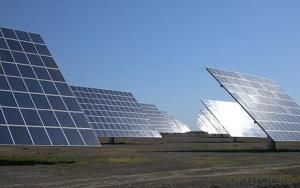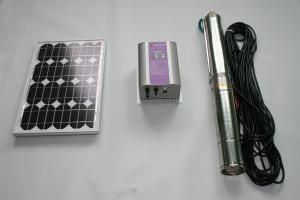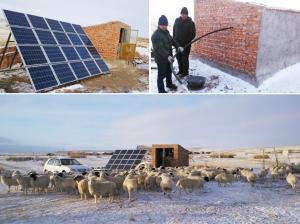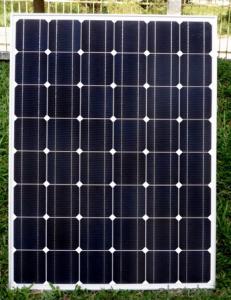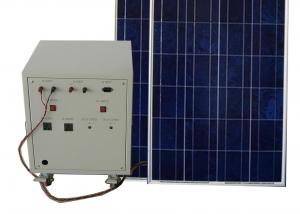Business Solar Energy Systems for Home Solar Power
- Loading Port:
- China Main Port
- Payment Terms:
- TT OR LC
- Min Order Qty:
- -
- Supply Capability:
- -
OKorder Service Pledge
Quality Product, Order Online Tracking, Timely Delivery
OKorder Financial Service
Credit Rating, Credit Services, Credit Purchasing
You Might Also Like
Specifications
3000w home solar power system/stand alone solar power system
1.10W7AH solar energy kit
1.Attachments:1x3W/12V LED Bulb*2, Phon
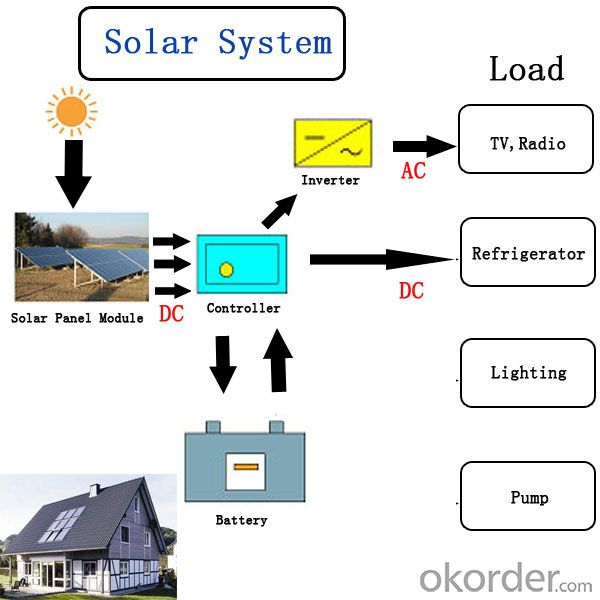
| Solar Panel | |||||||
| Type | T2-160W |
| |||||
| Rated Maximum Power | 160W | ||||||
| Maximum Power Voltage (Vmp) | 36V | ||||||
| Maximum Power Current (Imp) | 4.44 | ||||||
| Open Circuit Voltage(Voc) | 42.48V | ||||||
| Short Circuit Current(Isc) | 4.89 | ||||||
| Power Toerance | ±3% | ||||||
| Maximum System Voltage | 1000V | ||||||
| Operating Temperature | -40℃~+85℃ | ||||||
| Standard Test Conditions | AM1.5 100mW/cm2 25’C | ||||||
| Size | 1580*808*35MM | ||||||
| Weight | 16.5KG | ||||||
| Quantity | 8PCS | ||||||
| Controller | |||||||
| System voltage | 48V | Balance charge voltage | 58.4V±1% | ||||
| System current | 30A | Increase charge voltage | 57.6V±1% |
| |||
| No-load loss | <15mA | Discharge protection voltage | 44.4V±1% | ||||
| Solar energy input voltage | <100V | Discharge protection voltage | 51.2V±1% | ||||
| Over voltage protection | 66V | Work temperature | -25℃to+60℃ | ||||
| Over voltage recovery | 60V | temperature | -4.0mv/℃/2V | ||||
| Over-load, short circuit protection | 1.25 times rating current 30S;1.5 times rating current 10S overload current protection;≥3 times rating current short circuit protection | ||||||
| Inverter | |||||||
| Rated power | 3000W | ||||||
| AC input | Voltage | 140V-275VAC | |||||
| Input Frequency | 40~60Hz | ||||||
| Charge current | ≤10A | ||||||
| DC voltage range allowed | 48V | ||||||
| AC output | Voltage | 110V/220/230/240VAC±5% | |||||
| Frequency | 50/60HZ±0.5 | ||||||
| Wave from | Sine-wave | ||||||
| Inverter efficiency | 80-90% | ||||||
| Work environment | Working temperature | -25℃~+50℃ | |||||
| Relative humidity | <90%,no condensing | ||||||
| Altitude | <1 500m | ||||||
| noise | ≤40dB | ||||||
| Protection | Battery under-voltage protection, battery over-voltage protection, output overload protection, over-current protection, Overload 150%, 10 seconds | ||||||
| power box | 600*490*470 | ||||||
| Weight | 47kg | ||||||
| Battery |  | ||||||
| Nominal capacity | 120AH | ||||||
| Dimensions | 409*174*240mm | ||||||
| Weight Approx | 34kg | ||||||
| Quantity | 8pcs | ||||||
| Accessories |    | ||||||
| PV module mounting system | 3000*150*150*1set Weight:36KG | ||||||
| cables | 80M Weight:6.4KG | ||||||
| battery box | size:750*580*180 15KG | ||||||
| User manual | 1pcs | ||||||
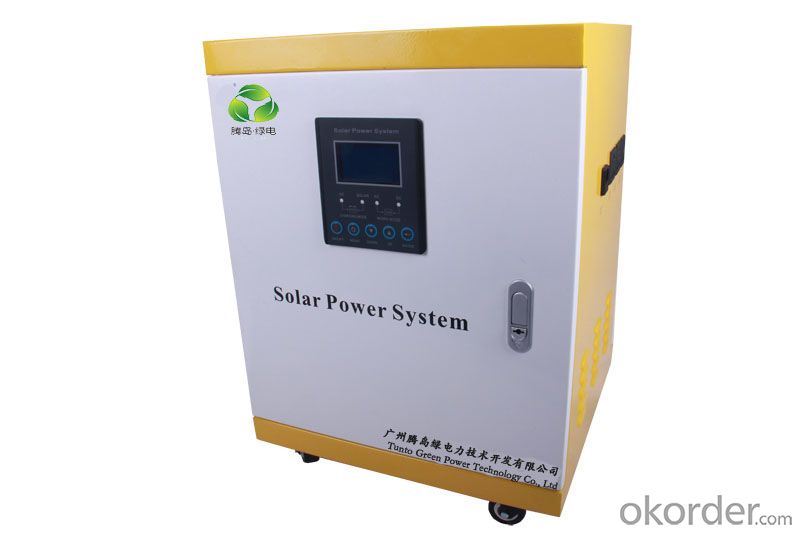
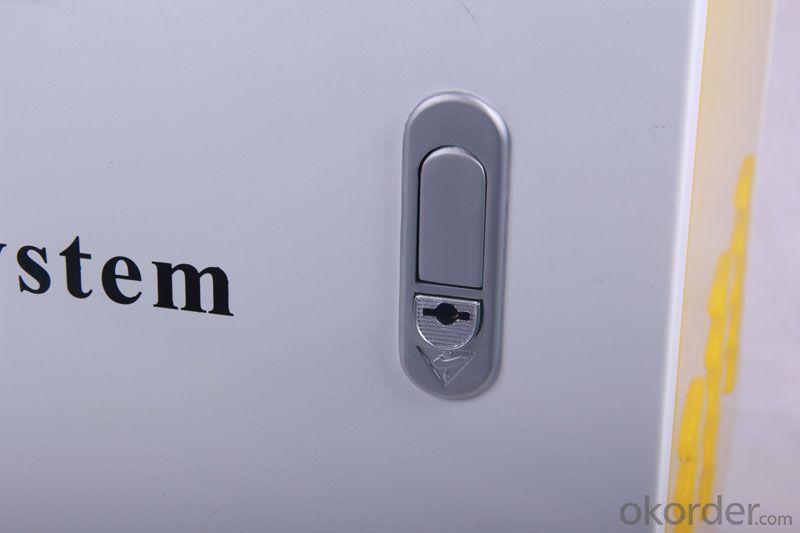
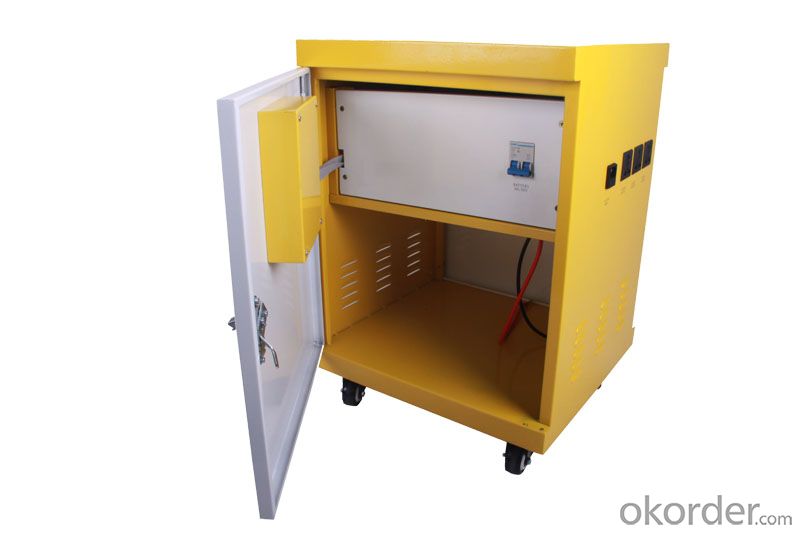

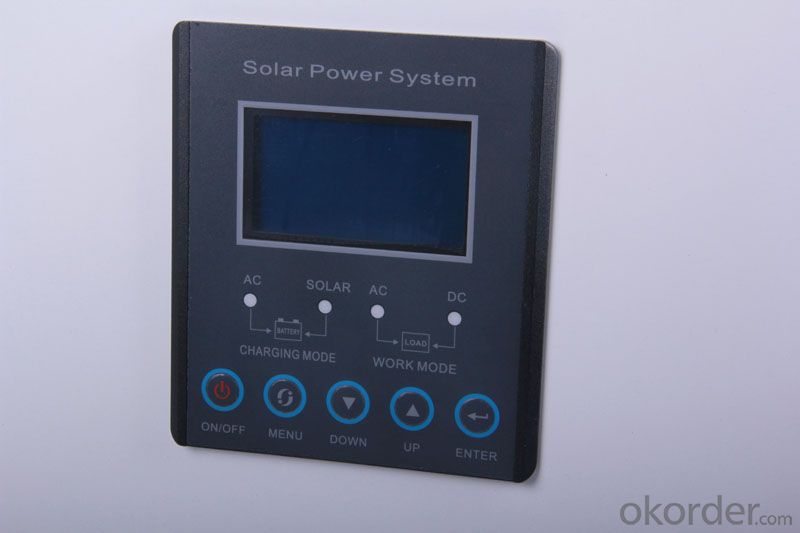
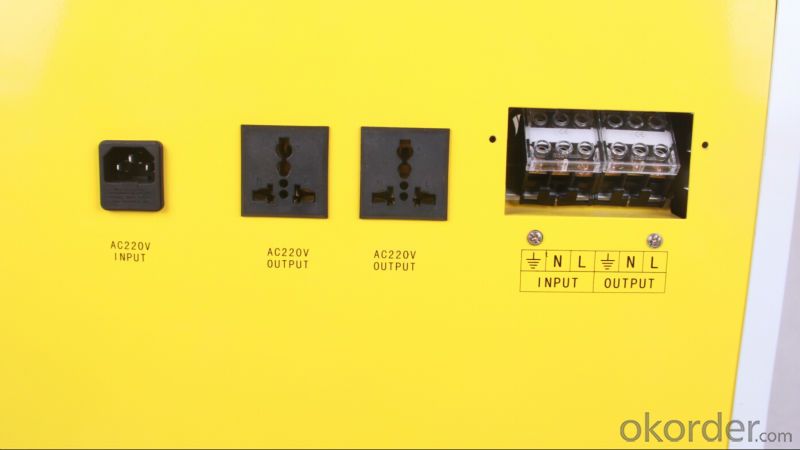
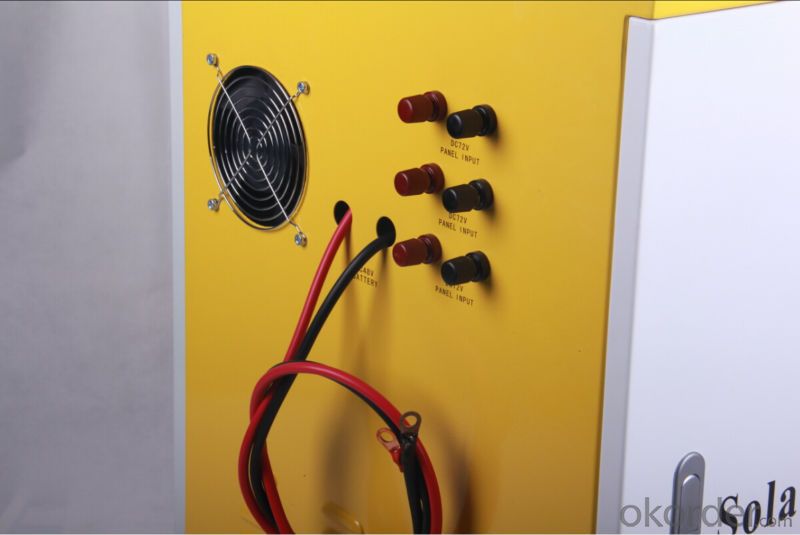
- Q: Can solar energy systems be installed on religious institutions?
- Yes, solar energy systems can be installed on religious institutions. Many religious institutions have recognized the importance of embracing sustainable practices and reducing their carbon footprint. Installing solar panels on their rooftops or grounds allows them to generate clean and renewable energy, which aligns with their values of stewardship and care for the environment. Additionally, solar energy systems can also help religious institutions save money on their electricity bills, freeing up resources to support their missions and community initiatives.
- Q: Can solar energy systems be used for powering electric battery manufacturing plants?
- Electric battery manufacturing plants can use solar energy systems to power their operations. Solar energy is a renewable and clean source that can be converted into electricity through photovoltaic (PV) panels. These panels capture sunlight and convert it into usable electricity. This electricity can then be utilized in various industrial processes, including electric battery manufacturing. To implement solar energy systems, manufacturing plants can install PV panels on their rooftops or in nearby open spaces. This allows them to directly power their operations, reducing their dependence on fossil fuel-based power and lowering greenhouse gas emissions. Additionally, any excess electricity generated can be stored in batteries for later use, ensuring a steady power supply even during periods of low sunlight. By embracing solar energy systems, electric battery manufacturing plants can make significant strides in reducing their carbon footprint and contributing to a more sustainable energy future. This not only supports global efforts against climate change but also helps in cutting down operational costs associated with traditional power sources.
- Q: Can solar energy systems be financed or leased?
- Yes, solar energy systems can be financed or leased. Many companies offer financing options for homeowners and businesses to install solar panels and other solar energy systems. These financing options allow the cost of the system to be spread out over a period of time, making it more affordable for customers. Additionally, leasing options are available where the solar panels are owned and maintained by a third-party company, and the customer pays a monthly lease fee for the use of the system. These financing and leasing options have made solar energy more accessible to a larger number of people and have contributed to the rapid growth of the solar industry in recent years.
- Q: How do solar energy systems affect the reliability of the electrical grid?
- Solar energy systems can have both positive and negative effects on the reliability of the electrical grid. On the positive side, solar energy systems can help diversify the energy sources used for electricity generation, reducing dependence on traditional fossil fuels. This diversification can enhance the overall stability and reliability of the electrical grid. Furthermore, solar energy systems can contribute to reducing peak demand on the grid. During daylight hours, when solar panels are most productive, they generate electricity that can be directly utilized by nearby buildings or fed back into the grid. This can help alleviate stress on the grid during periods of high demand, reducing the likelihood of power outages or blackouts. However, solar energy systems also present some challenges to grid reliability. One of the key concerns is the intermittent nature of solar power generation. Solar panels only produce electricity when the sun is shining, meaning that their output is subject to variations due to weather conditions and the time of day. This intermittency can make it challenging to match supply with demand, especially during cloudy or nighttime hours, leading to potential imbalances or fluctuations in the grid. To address this issue, grid operators need to carefully manage the integration of solar energy systems into the electrical grid. This involves implementing advanced forecasting and monitoring technologies to accurately predict solar power generation and plan for any potential fluctuations. Additionally, energy storage systems, such as batteries, can be deployed to store excess solar energy during periods of high generation and release it during times of low generation, helping to smooth out the intermittent nature of solar power. Overall, while solar energy systems bring many benefits to the electrical grid, such as diversification of energy sources and reducing peak demand, they also pose challenges related to intermittency. By adopting advanced technologies and implementing effective grid management strategies, these challenges can be mitigated, ensuring a reliable and resilient electrical grid.
- Q: Can solar energy systems be used in areas with limited government support?
- Yes, solar energy systems can be used in areas with limited government support. In fact, solar energy can be a viable solution for regions with limited infrastructure and government services. Off-grid solar systems can provide electricity to remote areas where grid connectivity is not available or reliable. Additionally, the decreasing cost of solar panels and advancements in battery storage technologies make it more feasible for individuals and communities to adopt solar energy systems, even in areas with limited government support.
- Q: Can solar energy systems be used in areas with limited space on rooftops due to existing equipment or structures?
- Solar energy systems can still be utilized in areas with limited rooftop space due to existing equipment or structures. In such instances, alternative approaches can be employed to optimize the use of available space. One possibility is to opt for ground-mounted systems rather than rooftop installations. These systems can be positioned in open areas adjacent to buildings or even on unused land nearby. Moreover, solar canopies or awnings can be set up in parking lots or other open spaces to generate solar power. These structures can be designed to offer shade and shelter while simultaneously harnessing solar energy. Consequently, even in areas with limited rooftop space, there are diverse and innovative options to implement solar energy systems.
- Q: Can solar energy systems be used in powering research farms or agricultural laboratories?
- Yes, solar energy systems can certainly be used to power research farms or agricultural laboratories. Solar energy is a clean and renewable source of power that can be harnessed through the installation of solar panels. These panels convert sunlight into electricity, which can then be used to power various equipment and facilities. Research farms and agricultural laboratories often require a significant amount of electricity to operate, including lighting, heating, cooling, and powering agricultural machinery. By utilizing solar energy systems, these facilities can reduce their reliance on fossil fuels and decrease their carbon footprint. Solar energy systems can be installed on the roofs of buildings or on open land near the research farm or laboratory. The amount of solar energy generated will depend on factors such as the location of the facility, the size of the solar panels, and the amount of sunlight received. However, with advancements in solar technology, even areas with limited sunlight can still benefit from solar energy systems. In addition to being environmentally friendly, solar energy systems can also provide long-term cost savings for research farms and agricultural laboratories. Once installed, solar panels have a lifespan of 25-30 years, requiring minimal maintenance. This can lead to significant savings on electricity bills, especially in rural areas where grid connectivity may be unreliable or expensive. Furthermore, solar energy systems can provide a reliable source of power, especially during periods of peak demand or power outages. By incorporating battery storage systems, excess energy generated during the day can be stored and used during the night or cloudy days, ensuring a continuous power supply for research activities. Overall, solar energy systems are a viable and sustainable solution for powering research farms and agricultural laboratories. They offer numerous benefits, including reduced environmental impact, long-term cost savings, and reliable power supply. As the demand for renewable energy continues to grow, integrating solar energy systems into agricultural facilities can contribute to a greener and more sustainable future.
- Q: Can solar energy systems be used for powering sports stadiums or arenas?
- Absolutely, sports stadiums or arenas can definitely utilize solar energy systems for power. In fact, numerous stadiums and arenas worldwide have already begun implementing solar energy as an environmentally-friendly and economically-viable power source. Solar energy systems, like solar panels, capture the sun's energy and convert it into electricity. This generated electricity can then be utilized to power various components of sports stadiums or arenas, including lighting, scoreboards, sound systems, and even electric vehicle charging stations. The quantity of solar energy required to power a stadium depends on its size, energy requirements, and the level of energy efficiency implemented. There are multiple advantages to employing solar energy in sports stadiums or arenas. Firstly, it is a clean and renewable energy source, contributing to a reduction in greenhouse gas emissions and a decrease in reliance on fossil fuels. This aligns with the increasing global focus on sustainability and combatting climate change. Secondly, solar energy offers long-term cost savings. Although the initial installation costs may be higher compared to traditional energy sources, the operational and maintenance expenses of solar panels are relatively low. Over time, the energy generated by solar panels can offset electricity costs, resulting in significant savings in the long run. Furthermore, solar energy systems can also serve as a visible symbol of environmental responsibility, inspiring fans, athletes, and communities to adopt sustainable practices. Sports stadiums and arenas often attract large audiences and media attention, making them high-profile venues. By embracing solar energy, these facilities can demonstrate their commitment to clean energy and motivate others to do the same. In conclusion, solar energy systems can effectively power sports stadiums or arenas. They provide a clean, renewable, and cost-effective alternative to traditional energy sources, while also promoting sustainability and inspiring others to embrace clean energy solutions.
- Q: How much space do I need for a solar energy system?
- The space required for a solar energy system depends on various factors such as the size of the system, the efficiency of the solar panels, and the amount of energy you want to generate. Generally, for a residential system, you would need around 100-400 square feet of roof space per kilowatt of solar panels. However, it is recommended to consult with a solar energy professional who can assess your specific needs and determine the exact space requirements for your solar energy system.
- Q: Can a solar energy system be installed on a data center or tech facility?
- Yes, a solar energy system can be installed on a data center or tech facility. In fact, many data centers and tech facilities are now embracing renewable energy sources like solar power to reduce their carbon footprint and lower their energy costs. A solar energy system can be installed on the roof or surrounding areas of the facility, utilizing the available space to generate clean and sustainable electricity. This not only helps the facility to become more environmentally friendly but also provides a reliable and independent source of power. Additionally, with advancements in solar technology, it is now possible to design and install solar systems that can cater to the high energy demands of data centers and tech facilities. By harnessing the power of the sun, these facilities can operate more sustainably and contribute to a greener future.
Send your message to us
Business Solar Energy Systems for Home Solar Power
- Loading Port:
- China Main Port
- Payment Terms:
- TT OR LC
- Min Order Qty:
- -
- Supply Capability:
- -
OKorder Service Pledge
Quality Product, Order Online Tracking, Timely Delivery
OKorder Financial Service
Credit Rating, Credit Services, Credit Purchasing
Similar products
Hot products
Hot Searches
Related keywords



